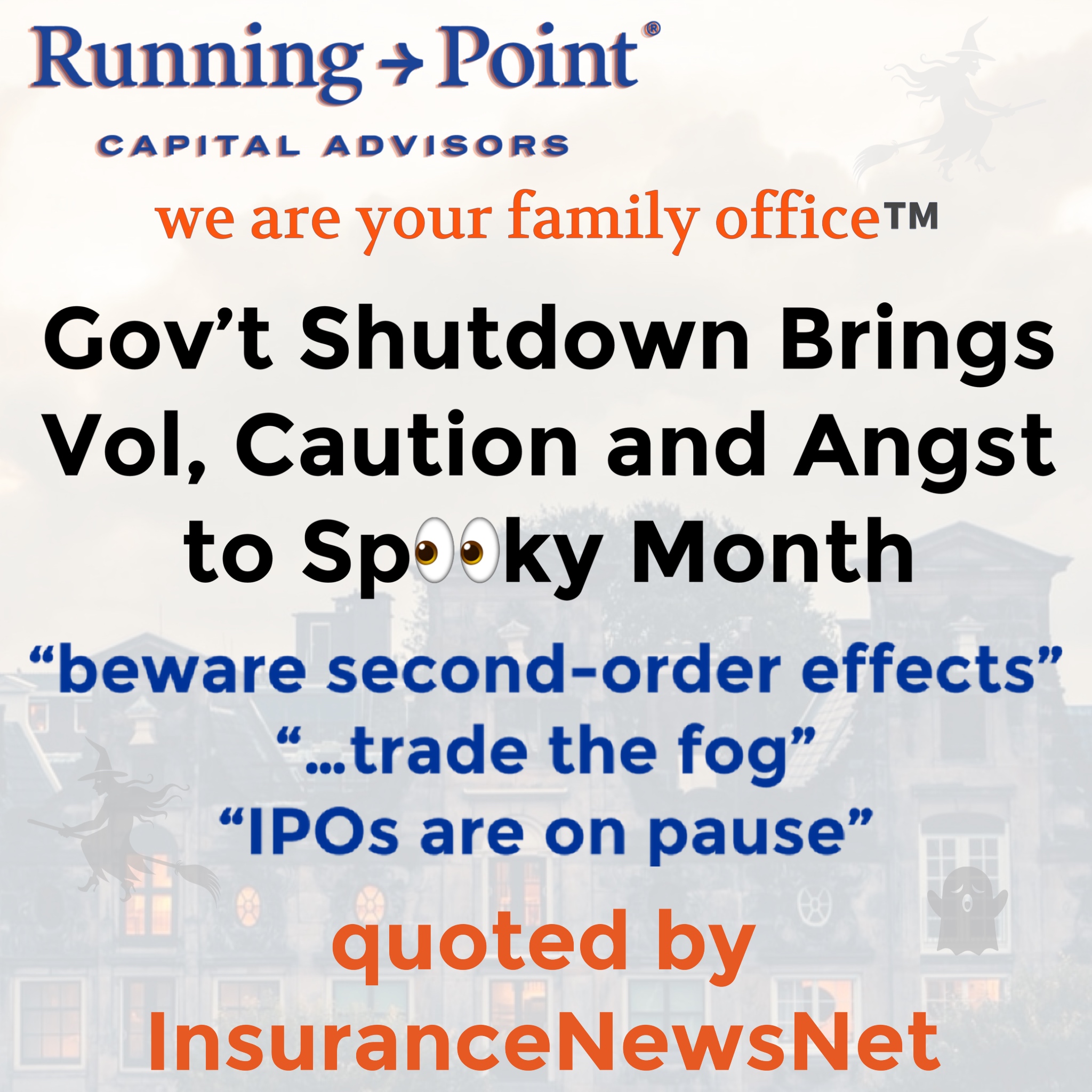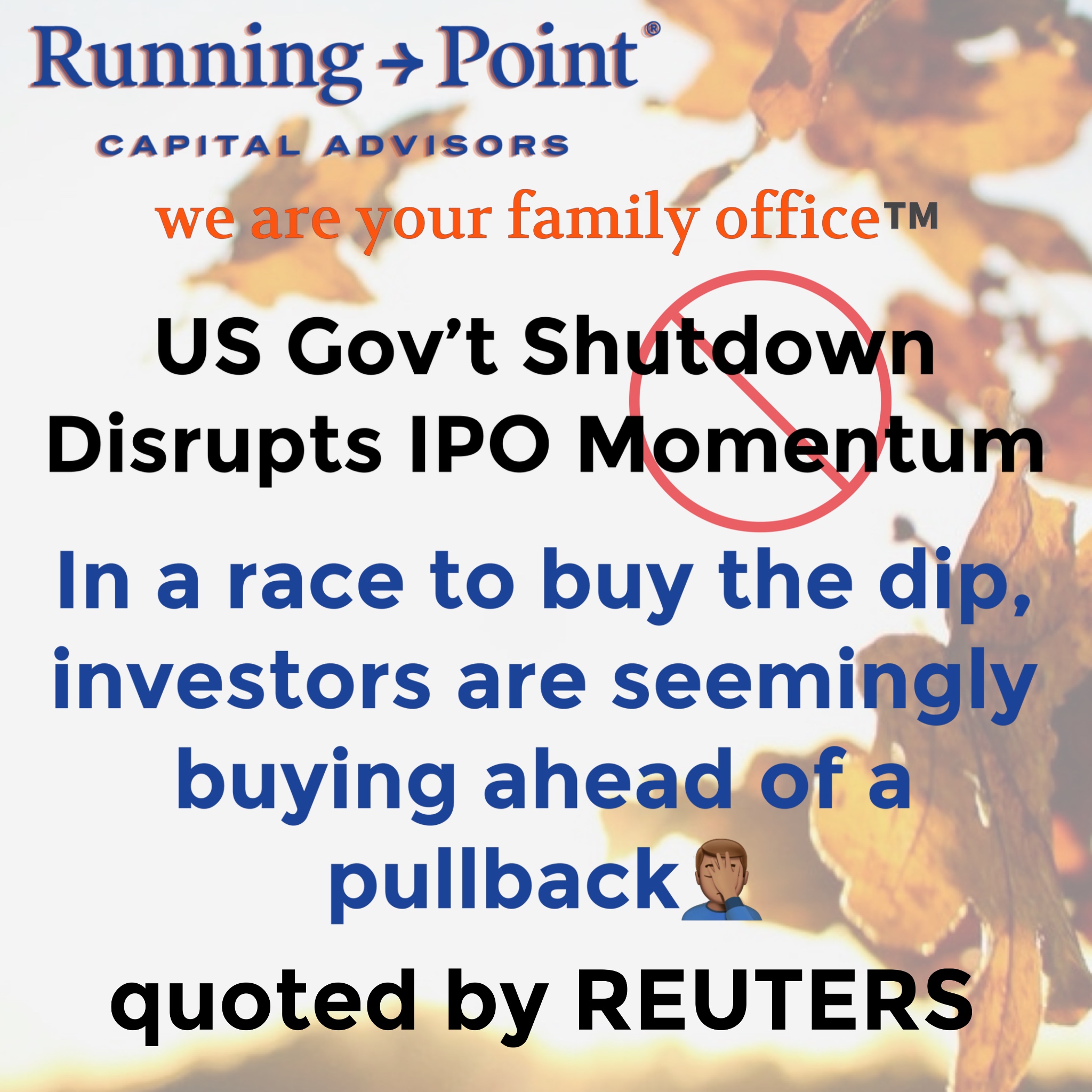What makes soda POPular for the consumer?
Running Point and its chief investment officer, Michael Ashley Schulman, CFA, were quoted by The Food Institute in an article — by Kelly Beaton, “Future of Soda: Less Sugar, More Influencers” — regarding the future direction and strategy for innovative soda, pop, and carbonated beverage brands.
Personalize soda pop to enhance consumer engagement and loyalty
The future of soda pop brands should involve personalized and customizable experiences. With advancements in technology, brands might offer consumers the ability to create their own unique flavors, adjust sweetness levels, add or remove ingredients or even personalize packaging designs. This could enhance consumer engagement and loyalty, as people seek products tailored to their preferences. Such personalization may seem farfetched, but we already see it in-home with SodaStream where customers brag about their flavor combos and carbonation trial and errors, in fast-casual restaurants where customers can blend soda fountain flavors, as well as at bubble tea shops where customers will line up to order custom flavored drinks with their choice of tea, preferred level of sweetness, type and amount of milk, hot or cold preference, and additional add-ons like black or white tapioca pearls, lychee jelly, popping boba, aloe vera, grass jelly, or red bean. Franchise soda brand Swig with 45 locations is another example of this customized call to action; known for their “dirty sodas”, they mix name-brand sodas with flavored syrups, creams and fruit-purees.
Maintaining relevance: The hip new age soda aisles
To stay relevant, soda pop brands might explore innovative strategies and diversify their product offerings by rapidly introducing new flavors, experimenting with unique ingredients, and expanding into functional beverages, such as energy drinks or enhanced hydration options.
Additionally, as consumers become more health-conscious and aware of the negative effects of sugary beverages, soda pop brands may continue to face challenges as well as fresh opportunities with healthier alternatives such as flavored sparkling water, pro-biotic and pre-biotic drinks, infudes adaptogens, and novel natural fruit flavors.
Coke vs. Pepsi! Still a thing! Just stir in some influencers
Following Coca-Cola’s 2022 rollout of five fantasy-flavors—Coca‑Cola Starlight, Coca‑Cola Byte, the artist Marshmello’s Limited Edition Coca‑Cola, Coca‑Cola Dreamworld, and Coca‑Cola Soul Blast—the company earlier this year launched a limited-edition flavor called Coca-Cola Move in conjunction with Grammy Award-winning artist Rosalía. The flavors have been bold, edgy and experimental! I applaud Coca-Cola for trying something new, but none of the flavors have taken off and it seems that the company is focused more on creating marketing buzz than on creating a new flavor/product with legs.
Not to be outdone, Pepsi is again side-lining Sierra Mist and putting fizz back into the lemon-lime soda wars with Starry in its battle to capture market share from Coca-Cola’s Sprite. If you haven’t heard of Starry, missed out on its NBA aligned media blitz, don’t get its “hits different” tagline, or saw its color and design scheme and thought it was a low-priced no-name-brand soda, you are not alone. Coca-Cola, however, has noticed and is releasing strawberry imbued Sprite Lymonade Legacy to its lineup of Sprite, Sprite zero-sugar, Spite cherry, Sprite tropical mix, and Sprite Lymonade.
And therein lies another difference. The large brands can afford to use high-level “mega” influencers whereas upstart brands (unless they are backed by a star name) usually need to rely on taste, novelty, culture, grass roots enthusiasm, personal connections, and less costly micro-influencers.
Look for innovation
For true soda and drink innovation and inspiration, look abroad to countries like Japan where trends move quickly and drink makers vie for attention with new flavors and attention grabbing labels. Also search out fast rising stars like Liquid Death with their catchy graphics and entertaining marketing that took the staid category of water and made it hip. Or trendy energy drink maker Ghost with their fun and borderline obnoxious lineup of loud tangs like WarHeads sour watermelon, Swedish fish, and Sour Patch redberry.
There is definitely a market for soda lovers willing to try new flavors and enjoy variety under a trusted brand umbrella. Amongst upstarts, Poppi and Olipop (with nearly $200 million in annual sales) and plant-based, organic, non-GMO ingredients, both seem to have staying power with the flavorful and good for you probiotic niches. Interestingly, most of the innovative new brands are not selling their products in 7.5 ounce mini-cans like Coke, Pepsi, and Dr. Pepper.
Quoted article excerpts are below:
“As consumers become more health-conscious and aware of the negative effects of sugary beverages, soda brands may continue to face challenges as well as fresh opportunities with healthier alternatives,” said Michael Ashely Schulman, chief investment officer with Running Point Capital Advisors, in an email to The Food Institute.
“Amongst upstarts, Poppi and Olipop, with … plant-based, organic, non-GMO ingredients, both seem to have staying power with the flavorful and good-for-you probiotic niches,” Schulman said.
In the meantime, traditional powers in the segment are using their significant financial clout to partner with well-known influencers to launch innovative products. Earlier this year, Coca-Cola launched a limited-edition flavor called Coca-Cola Move, in conjunction with Grammy Award-winning artist Rosalia.
“To stay relevant,” Schulman said, “soda pop brands might explore innovative strategies and diversify their product offerings by rapidly introducing new flavors, [and] experimenting with unique ingredients.”

A brand is no longer what we tell the consumer it is—it is what consumers tell each other it is.
Scott Cook, co-founder of Intuit
Disclosure: The opinions expressed are those of Running Point Capital Advisors, LLC (Running Point) and are subject to change without notice. The opinions referenced are as of the date of publication, may be modified due to changes in the market or economic conditions, and may not necessarily come to pass. Past performance is not indicative of future results. Forward-looking statements cannot be guaranteed. Running Point is an investment adviser registered with the U.S. Securities and Exchange Commission. Registration does not imply a certain level of skill or training. More information about Running Point’s investment advisory services and fees can be found in its Form ADV Part 2, which is available upon request. RP-23-52


